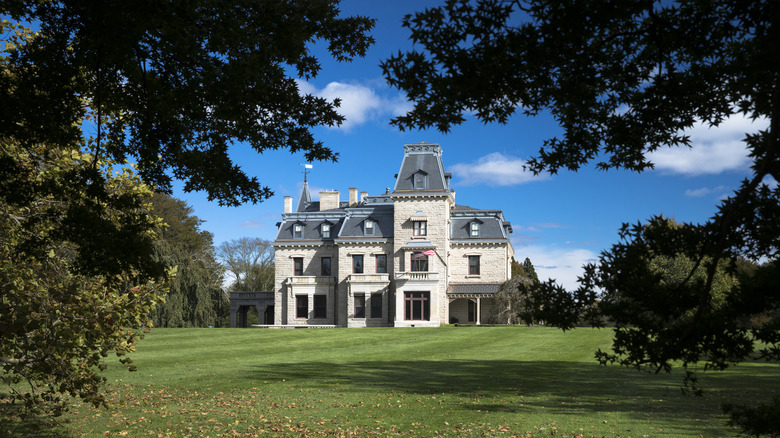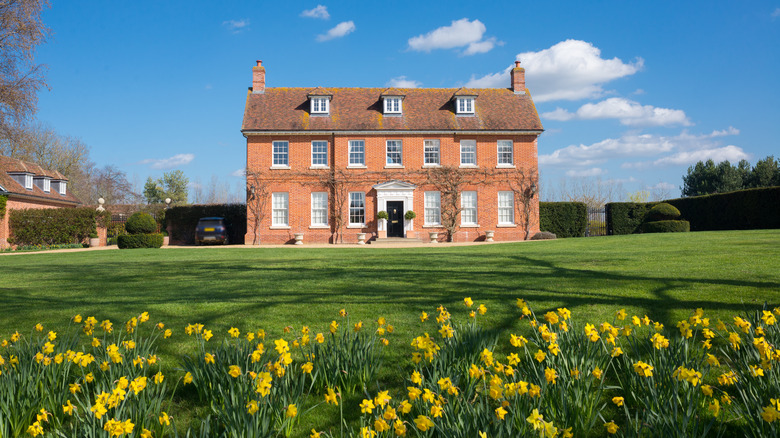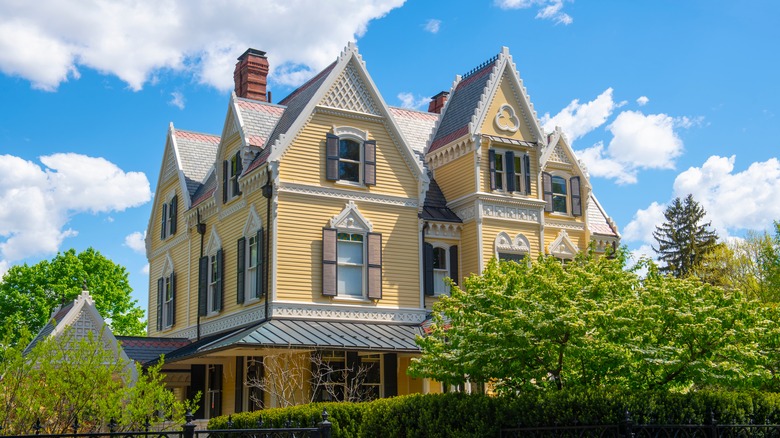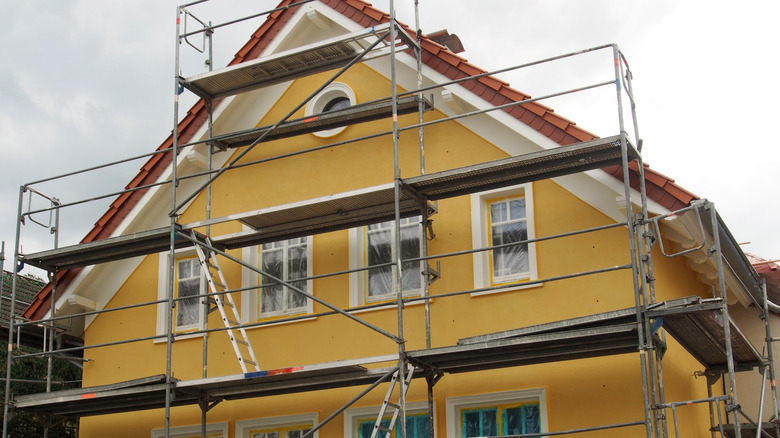Tips To Follow When Renovating A Historic Home
The charm and appeal of historical homes have resonated with homebuyers for centuries, and history and architecture enthusiasts are often drawn to these centuries-old homes to be a part of their unique story in some way.
And while the home buying process is an incredibly emotional time in normal circumstances, Homes notes that buying a historically significant property is often even more so, as buyers understandably feel an unspoken connection to the property's history. Investing in a historical home gives homeowners the chance to own a piece of history and play a role in a house's story that has been written for hundreds of years.
While it can be easy to fall in love with the rich history and beautiful crown molding that often comes with older homes, it's important to understand what you're getting into before fully committing. Rocket Mortgage warns that while owning a historical home can be incredibly special, renovation and management will also be very demanding, as older homes require a lot of maintenance to keep them beautiful and safe to live in. Following a few tips during renovation can help ensure the process goes as smoothly as possible. It can help you make the home your own while preserving its historical value and character.
Understand your property's historical designation
As excited as you might be to jump right into a renovation, a lot that has to happen before you can do so, as much of what you can do to your historical house is determined by laws and ordinances aimed at protecting historical sites. Travis Hendrix, a senior architect at KGA Studio Architects, says that the first step towards your renovation is defining what exactly it is that deems your house as being "historic" based on specific criteria. This will help you determine the steps you need to take to move forward with renovation or establish whether that is even an option.
Rocket Mortgage says there are several ways your property could be deemed historic. For this classification, they say a home needs to be at least 50 years old and connected to significant historical events or the lives of historically significant individuals in some way. It could also be categorized as historic if it has the potential to provide important historical information or it embodies a particular architectural style that is deemed as being historically desirable or significant.
Follow the necessary legal steps
Once you determine whether or not your old home is officially recognized as historical and to what extent, KGA Studio Architects says you need to start doing your research about any building or renovation restrictions that may exist for your house — keeping in mind that your home could be recognized as a historical site at a local, state, or national level. Most houses with an official historical designation have rules or regulations regarding structural changes, so your renovation plans will likely be subject to review and approval from various local, state, or national committees. Therefore, be prepared to tweak your design plans if your initial vision isn't possible upon committee review.
KGA Studio Architects suggests asking your realtor if they have any additional information about the historical status of the house, and if not, looking up the address never hurts. You can start research through your city or municipality's online information portals. State and national historical registries often overlap with those recognized locally, so starting local will likely be the easiest way to find information and the necessary contact information.
Be prepared for continuous renovation and upkeep
Once you have determined the necessary steps required to proceed with the renovation and are aware of any restrictions imposed on your project, you are finally ready to make your home uniquely yours. And while most homeowners want the exterior of their house to look nice, if you own a historical home, you may not have much say. Rocket Mortgage notes that you may be legally required to stay on top of exterior maintenance set forth by local and state ordinances. Not to mention older homes run into many more issues regarding upkeep as things will always pop up that need to be replaced or fixed, simply due to the age of the house. If you cannot fully commit to regular exterior maintenance, it might be best to invest in a newer home.
Hendrix also recommends via KGA Studio Architects hiring a contractor with an extensive portfolio of historical homes so they understand the importance of preserving its historical value and will know what to do should any issues arise along the way. He also recommends informing anyone involved with the renovation process of any pending design permit approvals should they not be granted — that way, they can have a plan in place just in case the design needs to be tweaked based on ordinances or restrictions.



